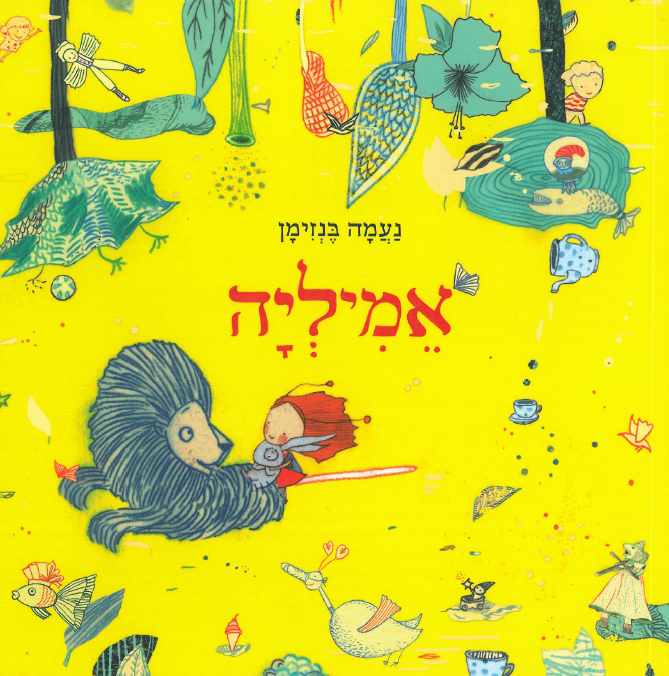גננת יקרה,
שלוש מדרגות חוצצות בין הפרידה מאמא לכניסה אל הגן. שלוש מדרגות, ובהן עולם שלם של רגשות ודמיון. המצב המוכר לכל ילד שמבקר בגן מתואר דרך החוויה הפנימית של אמיליה – חוויה של אומץ, התגברות וחברות.
פרידה ומעברים, מציאות ודמיון
לפעמים מה שנראה לנו המבוגרים כעניין זניח – רק שלוש מדרגות שמובילות אל הכניסה לגן! – מכסה עולם סוער ומופלא שמתרחש בתוך העולם הפנימי של הילדים.
"אמיליה" הוא ספר אמיץ וחכם, שמציג תהליך של התבגרות וצמיחה באמצעות החוויה הפנימית של הגיבורה אמיליה. הסיפור בעצם מכיל בתוכו שתי עלילות: ההתנהגות הנצפית של ילדה שמבקשת להיות "גדולה" ולהיכנס עצמאית לגן; והקושי והאמביוולנטיות שמתלווים למעבר זה. בסיפור הראשון אמיליה נפרדת בשלום מאמא, קצת מהססת ובסוף מתגברת על החששות ונכנסת לגן – שם מחכה לה חברה והן משחקות יחד. העלילה השנייה מתרחשת כולה בדמיון של הילדה, כמעט כמו חלום, ברגעים של קושי והיסוס.
לא תמיד אנחנו מבינים מה מתרחש בעולמם של הילדים, ממה הם חוששים, על מה הם מתגברים, למה דבר מסוים קשה להם ואחר קל. הסיפור על אמיליה מעניק לנו הזדמנות לשוחח על נושאים אלה ברגישות, ולתת דרור לדמיון.
קריאה נעימה!
אִם אֵין אֲנִי לִי, מִי לִי; וּכְשֶׁאֲנִי לְעַצְמִי, מָה אֲנִי? (אבות א, יג)
המשנה מפרקי אבות מדגישה את הכוח הפנימי של כל אחד ואחת, ומזכירה שיש דברים שעלינו לעשות לבד, ללא עזרה מבחוץ. לפעמים זה מצריך אומץ ומאמץ, אך לבסוף מצליחים. עם זאת, לעתים אין די במאמץ האישי, וכדאי להיעזר בחברים כדי להצליח עוד יותר.





